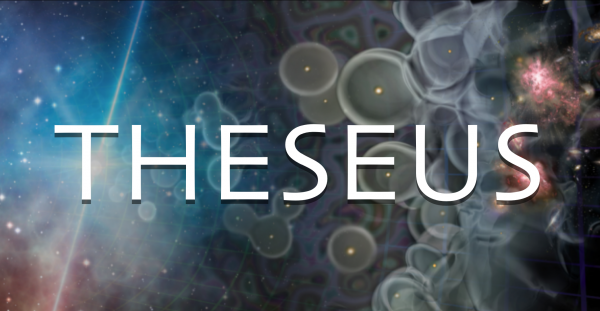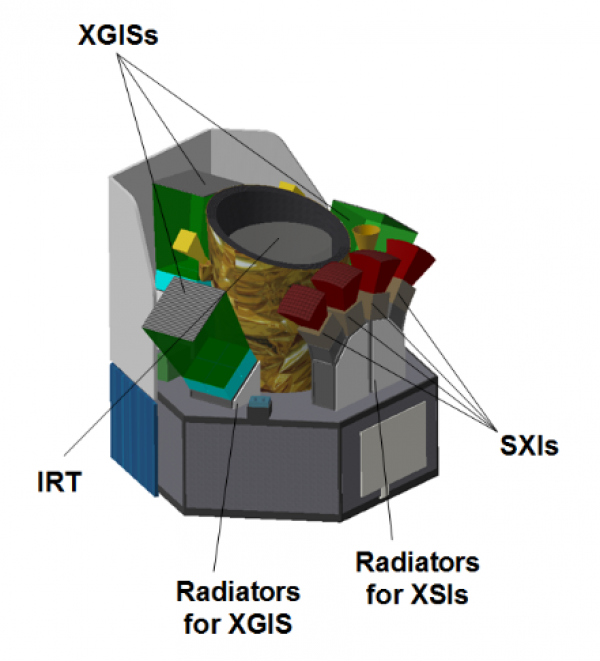The THESEUS (Transient High-Energy Sky and Early Universe Surveyor) project aims at exploring the early Universe through Gamma-Ray Bursts (GRBs), the most extreme explosions in the Cosmos, and to provide detection, accurate location and characterization of gravitational wave and neutrino sources, as well as many other high-energy transient sources.
Developed by a large European consortium, in which the Department of Astrophysics/AIM Laboratory of CEA-Irfu plays a relevant role, it has been pre-selected in 2023 by the European Space Agency (ESA) as a candidate for a middle-class mission of the Cosmic Vision scientific programme, whose launch date is scheduled for 2037.
The goal of the THESEUS mission is to fully exploit of the great potential of gamma-ray bursts for cosmological purposes, in particular for the study of the primordial Universe. THESEUS will thus provide a unique and fundamental contribution to several fields of astrophysics, cosmology and fundamental physics. It will work in close synergy with the major global facilities planned for the next decade, such as LSST (Large Synoptic Survey Telescope), ELT (Extremely Large Telescope), SKA (Square Kilometer Array), CTA (Cherenkov Telescope Array), ATHENA, aLigo (Advanced LIGO), aVirgo (Advanced VIRGO), Kagra (Large-scale Cryogenic Gravitational wave Telescope), Einstein Telescope, LISA, and Km3NeT (Cubic Kilometre Neutrino Telescope), thus significantly improving their scientific return.
THESEUS will also function as a more multi-purpose and flexible infrared and X-ray observatory, thus offering increased opportunities for the astrophysical community in the same way as NASA's Swift mission.
An international consortium led by France, and in particular by the Department of Astrophysics/AIM of CEA-Irfu will be in charge, in collaboration with the French Space Agency (CNES), of the IRT (Infra-Red Telescope), and in particular of the procurement of its camera, capable of imaging and spectroscopy in the near-infrared band.
The THESEUS mission was proposed to ESA in 2016 and is being studied as the fifth medium-size mission (M5) in ESA's Cosmic Vision programme, but finally in 2021 EnVision (a mission to the planet Venus) has been selected for the development phase. THESEUS was selected again in 2023 with two other missions, Plasma Observatory (dedicated to the study of solar wind and Earth magnetisphere) and M-Matisse (a mission to the planet Mars dedicated to the study of its magnetosphere and atmosphere), from 27 proposals submitted to ESA. The medium-sized ESA M missions have a ESA budget of €550 million, and additional contributions from ESA Member States and other countries. The final decision on the only mission to be selected for launch will be taken in 2026.




